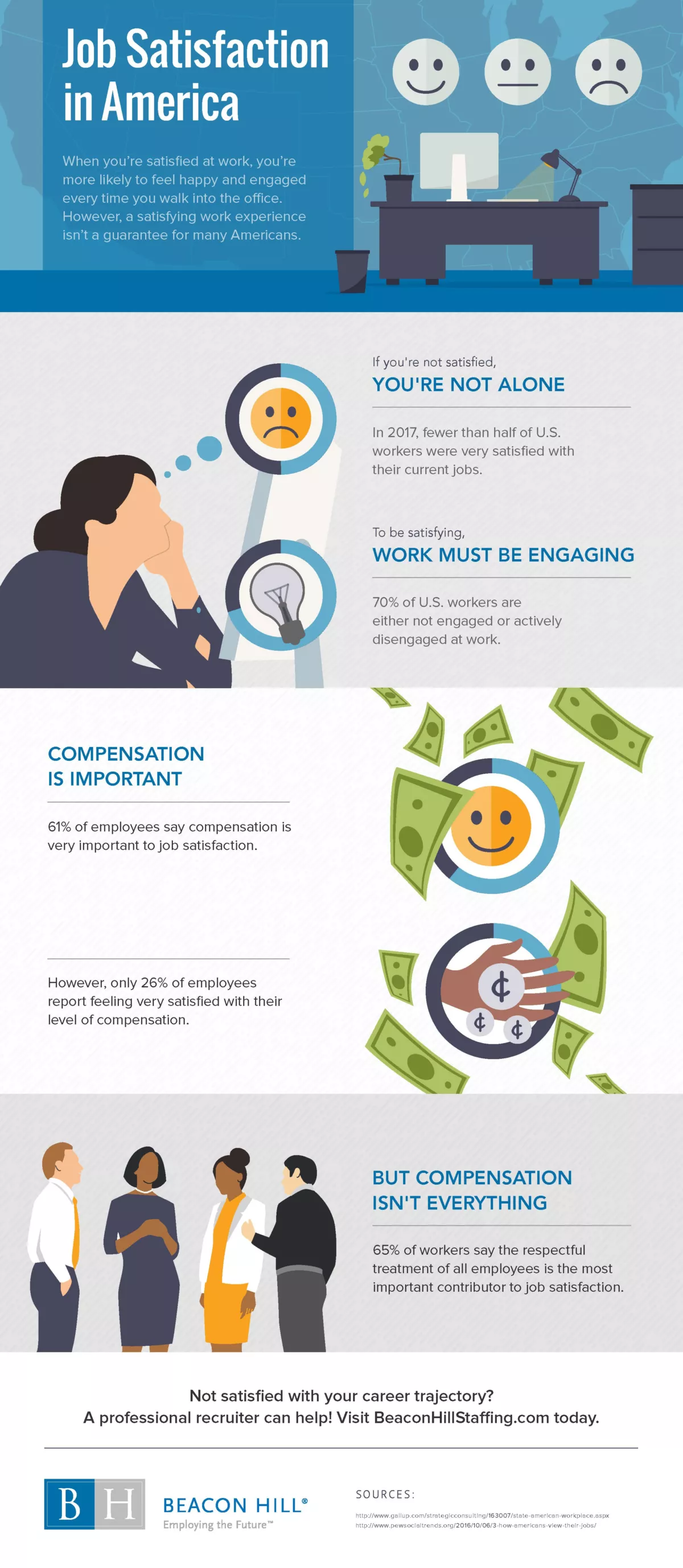Job Satisfaction in America
For many Americans, job satisfaction comes second to other factors. According to a report from Glassdoor, the majority of job seekers in the U.S. rank benefits and perks among their top considerations. Job seekers who are currently unemployed may be more willing to accept an offer that cannot guarantee high job satisfaction as long as it meets their financial requirements. However, passive job seekers who are currently employed may give higher priority to satisfaction rates when considering a competing offer.
Satisfaction and engagement go hand-in-hand
Job satisfaction is a reflection of many factors. How employees view their compensation in relation to their peers can change how they feel about their current positions, for example. Other factors include everything from average commute time to the visual appeal of the office environment. Employers have a lot of control of these factors, but that doesn't mean employees are completely off the hook when it comes to job satisfaction.
For example, productivity author Deep Patel, writing in Forbes magazine, explained that a positive morning routine can directly impact an employee's happiness at work. Individuals who want to take more control of their satisfaction at work may want to look for aspects of office life that are within their control. Eating a better breakfast could improve each morning's productivity rate, for instance. However, when these factors are outside of the employee's control, it's up to the employer to recognize the signs of low satisfaction and implement changes.
Ultimately, job satisfaction should be a comfortable topic of discussion between employees and employers. This infographic explores job satisfaction trends in America:

 Back to Top
Back to Top
